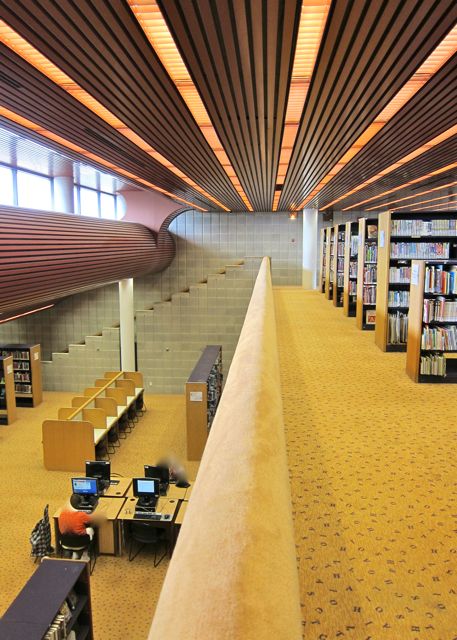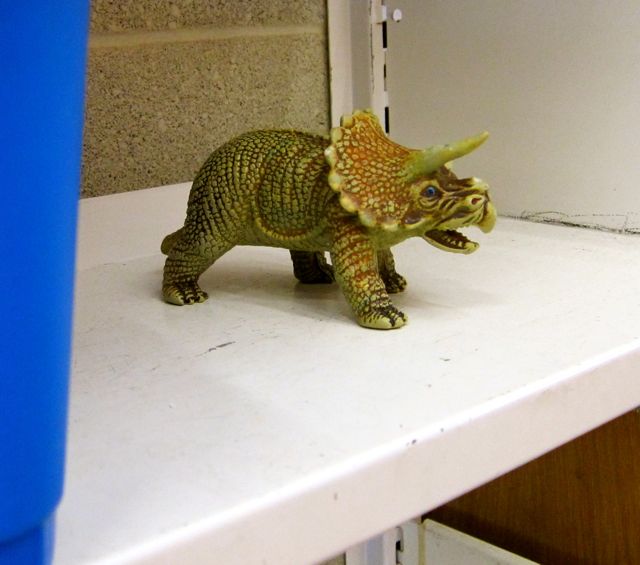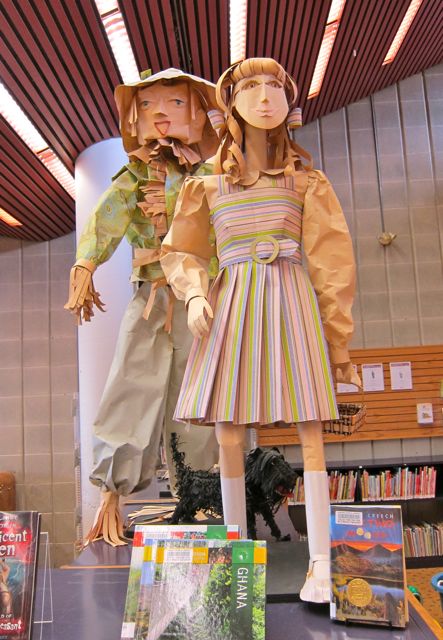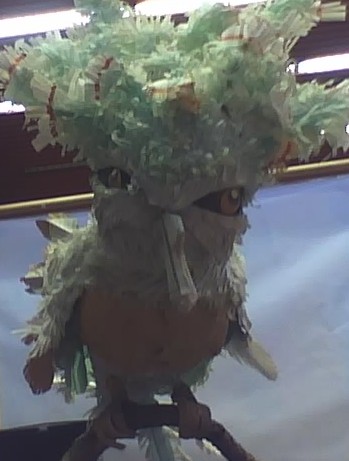 It was raining heavily when I drove into Albert Campbell’s lot on a Saturday morning in 2010. I paused to listen to the rain on the car roof for several minutes while enjoying the view of an empty field bordered by trees. Then I made a mad wet scurry to the lower back entrance and briefly investigated the basement level. There, I discovered an auditorium humming in dimly-lit calm and a yoga teacher demonstrating a series of shoulder stretches.
It was raining heavily when I drove into Albert Campbell’s lot on a Saturday morning in 2010. I paused to listen to the rain on the car roof for several minutes while enjoying the view of an empty field bordered by trees. Then I made a mad wet scurry to the lower back entrance and briefly investigated the basement level. There, I discovered an auditorium humming in dimly-lit calm and a yoga teacher demonstrating a series of shoulder stretches.
Lowering my shoulders in sympathy, I returned to the lobby, which was papered with community information leaflets. Services included a team of Library Settlement Workers sponsored by CICS who offered assistance in Bengali, Chinese, Tamil, and Urdu. These four languages were also represented in the multilingual collection, in addition to Greek, Italian, Kurdish, Persian, Spanish, Hindi, and Tagalog.
 When I walked upstairs to the main lobby, a treasure trove of used books greeted me on two tables. By the time I finished my eager rummaging, I’d scored fourteen ESL and Adult Literacy books to give to my students. What a jackpot!
When I walked upstairs to the main lobby, a treasure trove of used books greeted me on two tables. By the time I finished my eager rummaging, I’d scored fourteen ESL and Adult Literacy books to give to my students. What a jackpot!
Toting my selections, I spent about ten minutes admiring them on a wonderfully fuzzy window bench. I liked how my latest reading perch was covered in tan carpet and enlivened by four potted plants.
As I further reacquainted myself with this branch, I remembered why I had been so taken with it the first time. Albert Campbell is like a giant educational 1970’s rumpus room with plenty of barrel and square shapes to add visual interest.

Increasing the playfulness, a Lego effect was created by two sets of exposed staircases leading to the children’s section on an upper level platform. The east and west sides of the platform had rounded tan carpeted ledges from which to observe the activity on the main floor. Too bad there weren’t any massive carpeted slides!

Unable to slide back down to the main level, I contented myself with looking over the west side of the platform. From this vantage point, I beheld a pod of silent study carrels, tall shelves, and the crowns of patrons working at a double row of computers. I couldn’t see the Learning Centre, but I knew it was there directly below the platform.


Then I crossed to the east side and noted the coat-hooks considerately placed at child-height on the inner side of the ledge. As I leaned against it, the check-out desk and newspaper lounge with its carpeted window perch came into view.
I found the decorations at Albert Campbell folksy and fun, from a random triceratops on a shelf to the fanciful paper creations by Nan Unsworth. Five of Unsworth’s paper renditions of characters from The Wizard of Oz stood tall on top of a long bookshelf in the children’s section.



On the north wall hung an enormous zodiac tapestry with paper images of fish, a ram, a crab, scales, and other symbols. (The archer looked a little dusty, but he was quite high up and difficult to reach with a cloth).


Not far from the Wizard of Oz party, someone had propped four paper masks on top of individual high shelves. Their stern expressions seemed to say, “You’d better behave or I’ll rustle my papery beak at you!”

After taking a few photos of the masks, I trotted down the east stairs. Then I settled into a private study carrel and constructed a personal study island with my bag of books, DVD’s, phone, and bottle of correction fluid. As I wrote in my journal, I could hear the tapping of keyboards, pages rustling, and the patient voice of a nearby math tutor three carrels to my right. It was the perfect place to be on a rainy Saturday morning.

When I finally left Albert Campbell several hours after arrival, the rain had stopped. The sloping garden outside the main entrance looked refreshed from its shower, and I returned to the car with visions of dewy irises dancing in my head.
